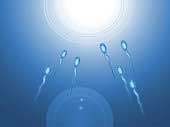
James Umen and colleagues at the Salk Institute for Biological Studies in California, examined related algae - the single-celled Chlamydomonas reinhardtii and the multicellular Volvox carteri, which diverged from each other 200 million years ago.
Both types are known to reproduce sexually under certain conditions. While V. carteri reproduces through the fusion of a large female egg and small male sperm, C. reinhardtii's sex cells are of a same size and cannot be categorized as male or female.
The process in each case is controlled by a genetic sequence known as the Mating Locus, or MT, which the researchers hoped would yield clues as to why the sex cells produced by the two types of algae are poles apart.
The researchers compared the MT regions of both algae by examining the RNA sequences produced by each. They found that although V. carteri's genome is just 17 per cent bigger than that of C. reinhardtii, its MT region is five times larger.
Although, some of the genes identified were common to both, the team identified five new genes present only in V. carteri's female MT and eight new male genes.
Crucially, although these are completely new, the team found similar genes with non-sex roles close to the MT area in the genome of C. Reinhardtii. It looks as if Volvox had translocated these genes into its MT area, and over time they have gained new functions related to sex.
"The genes evolve rapidly in sex-specific ways," said Umen, who believes they accumulate mutations over time. A beneficial mutations must have lead to larger eggs and smaller, plentiful sperm.



 Click it and Unblock the Notifications
Click it and Unblock the Notifications








